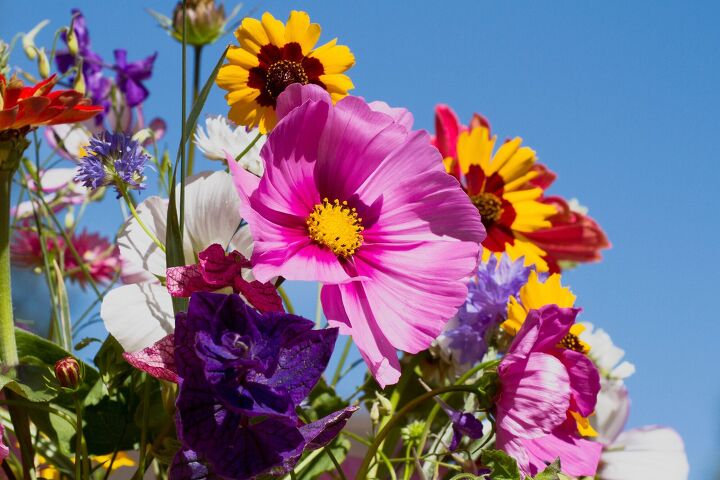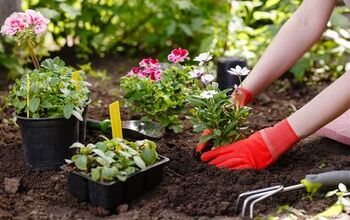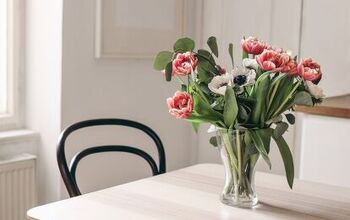Best Flowers To Plant In Summer

It’s not too late if you didn’t plant all your favorite flowers during spring. Many flowers can still thrive if you plant them in summer, but it’s important to choose plants that will bloom quickly. So, what are the best flowers to plant in summer?
The best flowers to plant in summer are black-eyed Susan, lantana, marigolds, and zinnias. Delphiniums, asters, sunflowers, and purple coneflowers all thrive in summer with full sunlight and good soil drainage. Full-sunlight plants that do well during summer also include yarrows, carnations, peonies, blanket flowers, and hibiscus.
Check the top inch of soil each day to make sure that your summer flowers don’t dry out. Most summer flowers require water at least 3 times per week. Follow along as we highlight the best flowers to plant in summer.
What Flowers Can I Plant In Summer?
Whether it be zinnias or purple coneflowers, there are many great flowers to plant in summer. The best summer flowers require full sunlight and soil that drains well. Let’s look at the best flowers to plant in summer.
1. Black-Eyed Susan
Many homeowners plant black-eyed Susan during spring, but it’s not too late to plant it during summer. If you plant them in a spot where they’ll get lots of sun, they should thrive. While it helps to plant black-eyed Susan in spring, it’s safe to plant it in summer, as it blooms quickly.
These low-maintenance flowers only require an inch of water per week, unless it’s particularly hot and dry outside. You only need to water black-eyed Susan 2-3 times per week in most cases. The beautiful yellow and black flowers are sure to stand out in your garden.
2. Lantana
Lantana can bloom quickly, whether it’s planted in spring or summer. These beautiful flowers come in a variety of colors ranging from pink and orange to yellow and purple. Lantanas only need an inch of water per week, and they love to get as much sunlight as possible.
They can survive droughts, but it’s important to water them at least 3 times each week. You don’t need to give them a lot of water at once, but you should make sure the top layer of soil is moist. Lantanas can come back, but you may need to plant them again each season depending on your climate zone.
3. Marigolds
Marigolds will thrive if you plant them anytime between the start of spring and June. Your marigolds may not bloom if you wait to plant them until it is too far into summer. Check the top inch of soil each day and water your marigolds if it’s dry.
It also helps to keep marigolds around during the summer because they attract pollinators, such as bees. The presence of marigolds can ensure that bees and butterflies will pollinate the other plants throughout your garden. They are drawn to the nectar that marigolds produce as well as the vibrant orange flowers they are known for.
4. Zinnias
Zinnias are among the best flowers to plant in summer if you want to instill your garden with vibrant colors. Ideally, you should plant zinnias in an area where they get as much sunlight as possible, or else they won’t thrive. Much like marigolds, bees, and butterflies love zinnias, which will benefit the other flowers in your garden.
It can take up to 2 months for zinnias to bloom if you plant them as seeds. That’s why you should plant them as early as possible. Try to plant zinnias before mid-June so they will thrive and grow to be as vibrant as possible throughout the summer.
5. Delphiniums
Nothing says summer like tall, vibrant, blue flowers. Delphiniums tend to prefer sandy soil, and they can grow up to 6 feet tall under the right conditions. How much water a delphinium needs depends on the temperature and humidity.
Ideally, you should make sure that the soil is always damp an inch below the surface. This will ensure that the root system can absorb as much water and nutrients as possible for healthy growth. They require at least 6 hours of sunlight per day, so make sure to plant them in an open area.
6. Asters
Asters are among the most easy-going flowers to plant in summer. That’s because asters can handle partial shade or full sun. They will grow faster in full sunlight, but asters can still thrive in partial shade if they get 4-6 hours of sun each day.
Asters are most commonly purple, but the flowers also come in pink, blue, and white. They are part of the sunflower family, and that makes sense when you notice the vibrant yellow center that the flowers typically have.
7. Purple Coneflower
Pollination is important during spring and summer, so you should plant as many flowers that attract bees and butterflies as possible. Purple coneflower is like a magnet for bees and butterflies because of the vibrant color of the flowers and the nectar they produce. As perennials, purple coneflowers will come back next spring if you plant them this summer.
Purple coneflowers thrive in tropical climates, but they are compatible with most climate zones in the United States. Full sunlight is essential for purple coneflowers, and they need up to 8 hours of sun per day.
8. Sunflowers
Sunflowers are among the most iconic summer flowers. These sun-loving flowers are instantly recognizable for the vibrant yellow pedals. The fuzzy center of sunflowers is just as charming as the colorful petals.
As the name suggests, sunflowers love as much sunlight as possible, so you should only plant them in spots without shade. Butterflies will quickly gravitate towards sunflowers and help pollinate the rest of your garden.
9. Hibiscus
Plant some hibiscus if you have plenty of room for full-sun plants in your garden. Hibiscus is durable and grows quite quickly. Make sure to water your hibiscus at least three times per week or more if the top layer of soil dries out.
You can plant hibiscus in an area with partial shade, but they won’t flower as quickly. Luckily, hibiscus is a perennial, so your flowers will come back next spring.
10. Blanket Flower
Gaillardia, also known as blanket flower, is a durable full-sun plant that thrives in summer. These plants are durable once they’ve bloomed, but high-quality soil is essential for them to survive. Only plant blanket flowers in soil that can drain well.
Otherwise, you may inadvertently damage the roots and cause soil erosion if you over-water them. Luckily, blanket flowers come back each year if the soil is in good condition.
11. Peonies
Peonies are notable for their colorful and puffy petals. They love tropical climates, and peonies will continue to grow and thrive unless you live in an area with harsh falls and winters. Otherwise, peonies will grow indefinitely and turn into bushes.
Water your peonies deeply twice per week and water them lightly a few more times as needed throughout the week. During rainy weeks, you won’t likely need to water your peonies if the top inch of the soil stays moist.
12. Yarrows
Yarrows are full-sun plants known for their small flowers that typically come in white or yellow. They can handle shade, but too much shade can make the soil retain excess water, which can damage the roots and plant. Yarrows can even spread if there is enough open space around them.
The only downside of yarrows is that they can grow moldy if they stay moist for too long when it isn’t warm. However, that is less likely to happen during summer than spring, so it’s best to wait to plant them until late May or mid-June.
13. Carnations
Consider planting carnations if you want to add a touch of charming color to your yard. Carnations are typically red or pink and feature beautiful flowers that are like roses. Depending on where you live, carnations can grow up to 2 feet tall.
This is especially true if you live in a tropical zone where it won’t get cold during fall and winter. However, you must be careful with carnations if you have pets that spend a lot of time in your yard. Carnations are toxic to horses, cats, and dogs.
Summing It Up
Black-eyed Susans, lantanas, marigolds, and zinnias are the best flowers to plant in summer. Other flowers like asters, purple coneflowers, and delphiniums can add plenty of color and character to your garden. Yarrows, carnations, and peonies all love full sun and will come back in spring if you take great care of them during summer.
Make sure to plant your summer flowers in soil that can drain easily. This will protect the root systems so that they will grow to their full potential. The average summer flower requires at least an inch of water per week, but they need more than that if the soil becomes dry.
Related Guides

Nick Durante is a professional writer with a primary focus on home improvement. When he is not writing about home improvement or taking on projects around the house, he likes to read and create art. He is always looking towards the newest trends in home improvement.
More by Nick Durante



























